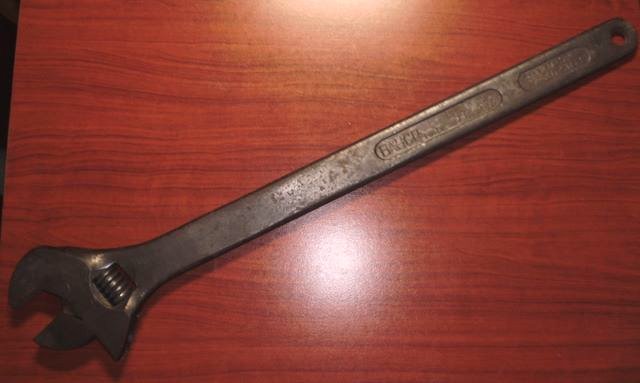 Bruce's Bahco Collections
Bruce's Bahco Collections
On March 21, 1911,
J.P.
Johansson
received
Patent
No.
38643
for a
wrench
with
a 15
degree
angle
between head
and handle, and the
rod
shortened
so that
it
could
not go outside the
head when
screwed
out.
During this period, wrenches
No.
51-58
were produced.
No. 51
gripping
capacity 21
mm
length
= 205
mm
(8
")
No. 52
-
"-
28 mm
-"
- =
255
mm (10
")
No. 53
-
"-
33 mm
-"
- =
305
mm (12
")
No. 54
-
"-
38 mm
-"
- =
380
mm (15
")
No. 55
-
"-
47 mm
-"
- =
455
mm (18
")
No. 56
-
"-
52 mm
-"
- =
560
mm (22
")
No. 57
-
"-
65 mm
-"
- =
660
mm (26
")
No. 58
-
"-
80 mm
-"
- =
760
mm (30
")
A
chamfer
at the
screw
hole
was introduced.
Labelling was carried out
by
heavy stamping.
The shaft hole was introduced.
(see
Figure
4
and
5)
Figure #4

Figure #5

The set
screw had
right-hand threads,
which
was
not accepted
by customers.
The head
is
slightly thinner
than sizes
1-6.
Grip
surfaces hardened.
In 1913, wrenches
No.
51-58 were produced with
right hand threads on the screw. Wrenches
No.
61-68 were produced with left hand threads.
The 60-68 series had the same
grip
capacity
and
lengths as models 51-58.
Complaints
about
problems with the screw
hole
led to
the 3rd generation.